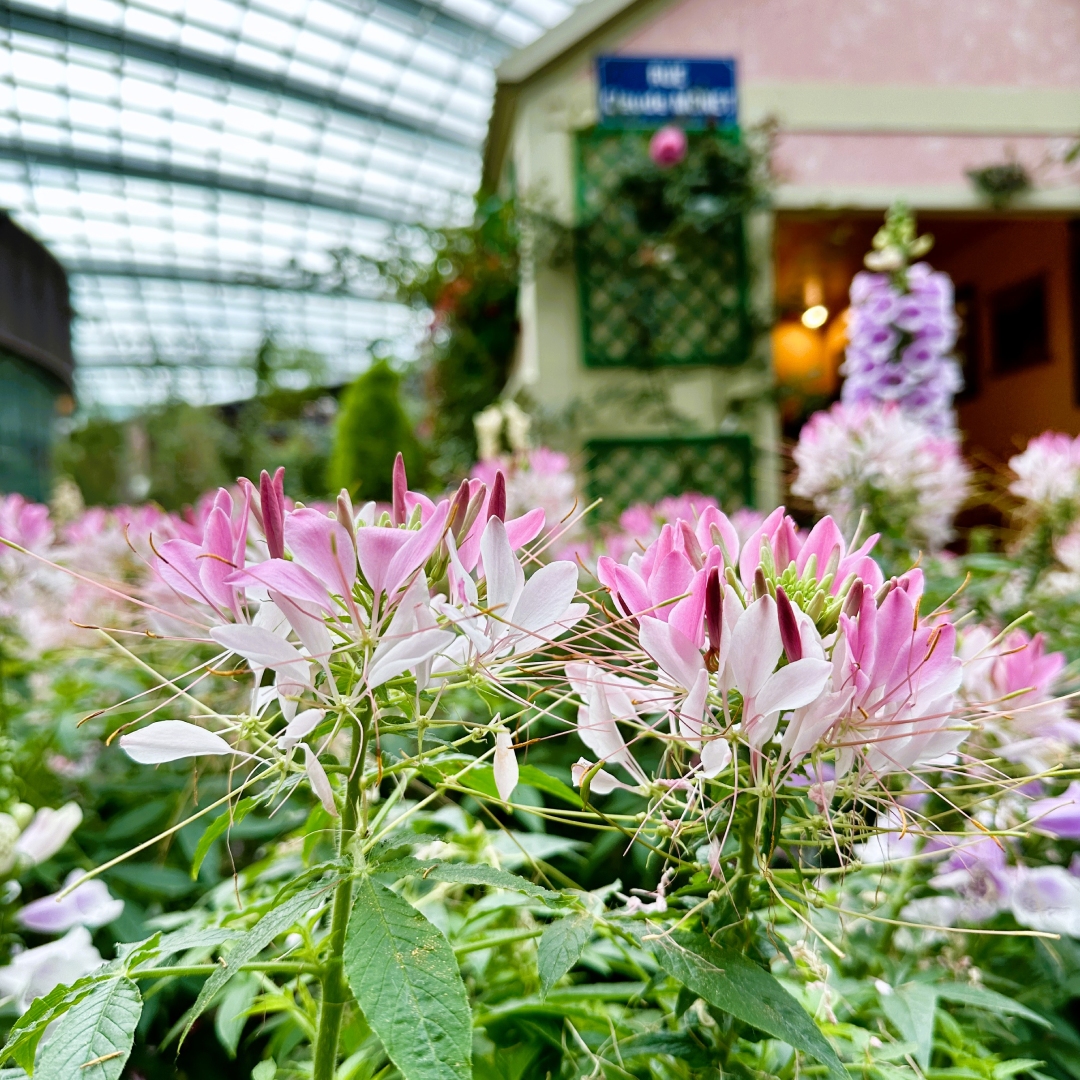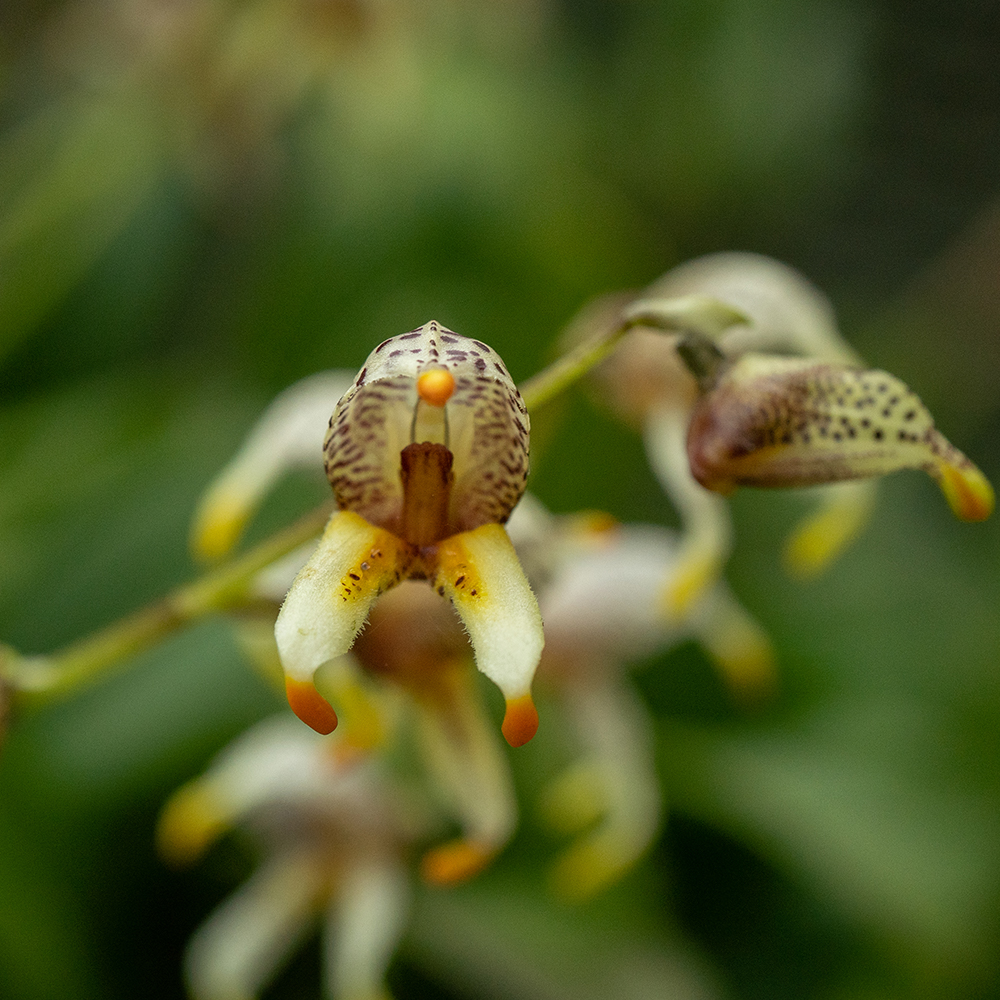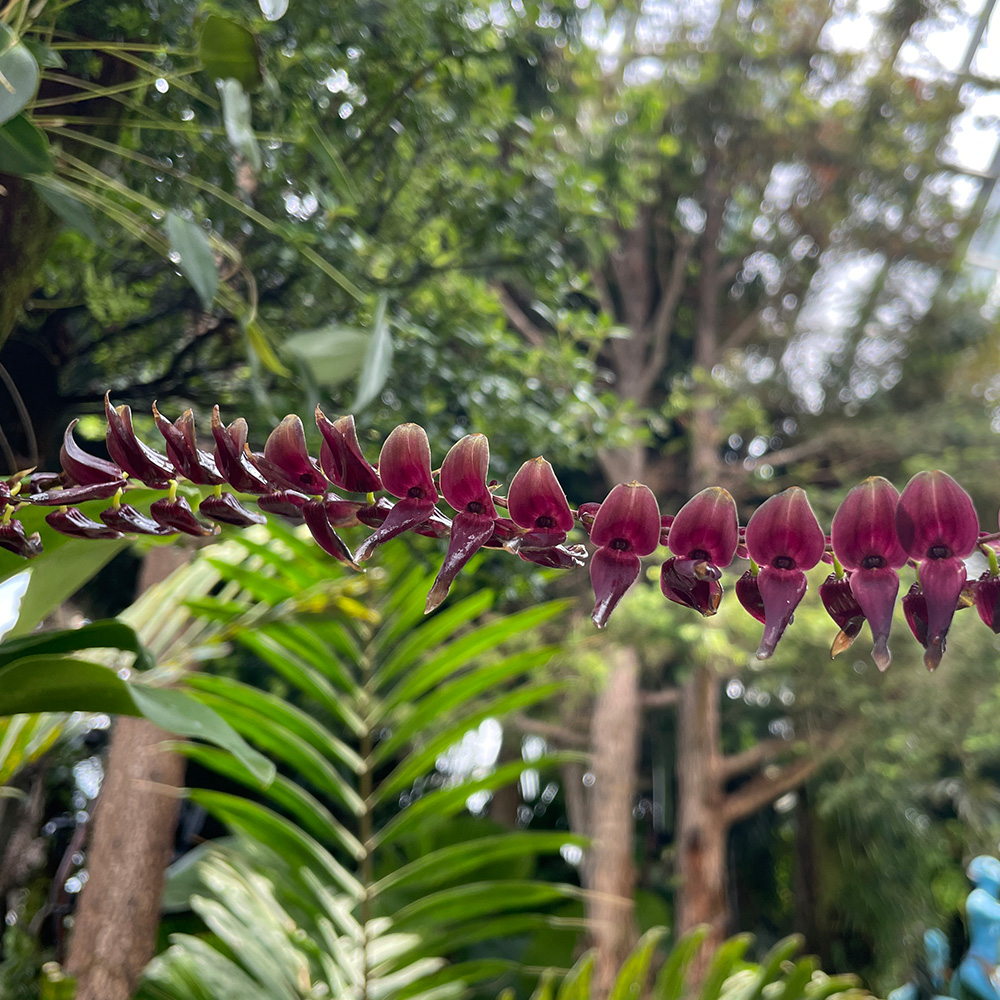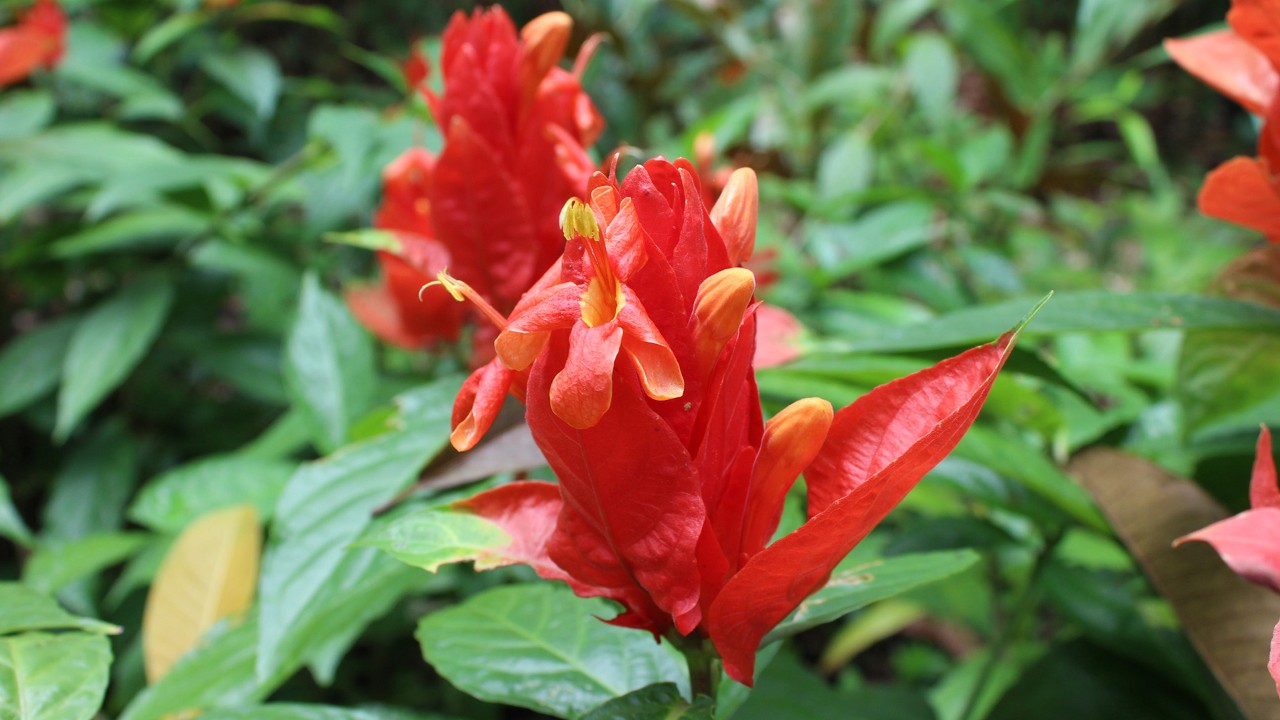
The genus Ruellia consists of approximately 350 species of shrubs, all of which belong to the bear’s breeches family or Acanthaceae, which comprises of several ornamental species such as the lollipop plant (Pachystachys lutea), as well as the previously featured Brazilian red cloak (Megaskepasma erythrochlamys) and Persian shield (Strobilanthes dyerianus). Plants in the genus are often commonly referred to as ‘wild petunias,’ because several Ruellia species have petunia-like, trumpet-shaped flowers. However, the name is a misnomer as true petunias belong to the nightshade family (Solanaceae), which includes tomatoes, potatoes, eggplants, and chilli.
The flowering specimens pictured above belong to Ruellia chartacea. This species is native to the tropical rainforests of South America, namely Brazil, Colombia, Ecuador, and Peru—thus, its common name, Peruvian wild petunia. Like several species in its family, R. chartacea produces conspicuous flower spikes with large, fiery-red bracts, and equally red, tubular flowers. The bracts, which can persist for several weeks, serve to constantly attract pollinators—butterflies and hummingbirds in its native range —to the flower spikes, as their short-lived flowers bloom in succession.
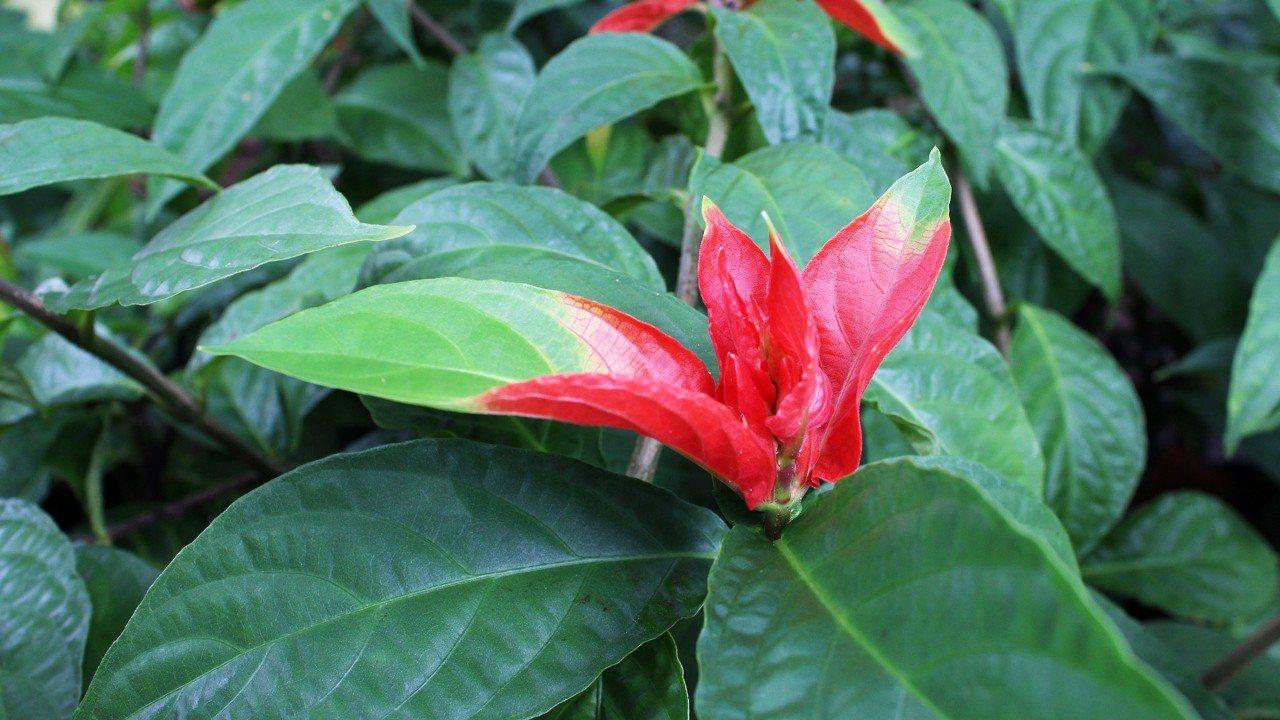 Look out for these funky parti-coloured leaves that seem to change into bracts in developing flower spikes like the one above!
Look out for these funky parti-coloured leaves that seem to change into bracts in developing flower spikes like the one above!
Although most of our plants are just under one metre the Peruvian wild petunia can eventually reach a height of up to two meters! This shrub also does well in a semi-shaded or shady part of the garden and can also be cultivated as a potted houseplant. This makes the species an excellent choice to brighten up an otherwise gloomy corner of the garden or the house, especially when the plant is in bloom.
Its generic name Ruellia is named in honour of Jean Ruelle (1474-1537), a 15th century French physician to King Francis I of France, and the botanist who translated Dioscorides’ De Materia Medica, a 1st century AD five-volume book on herbal medicine, into Latin. The species epithet chartacea is Latin for ‘papery’ in reference to the paper-like texture of its red bracts.
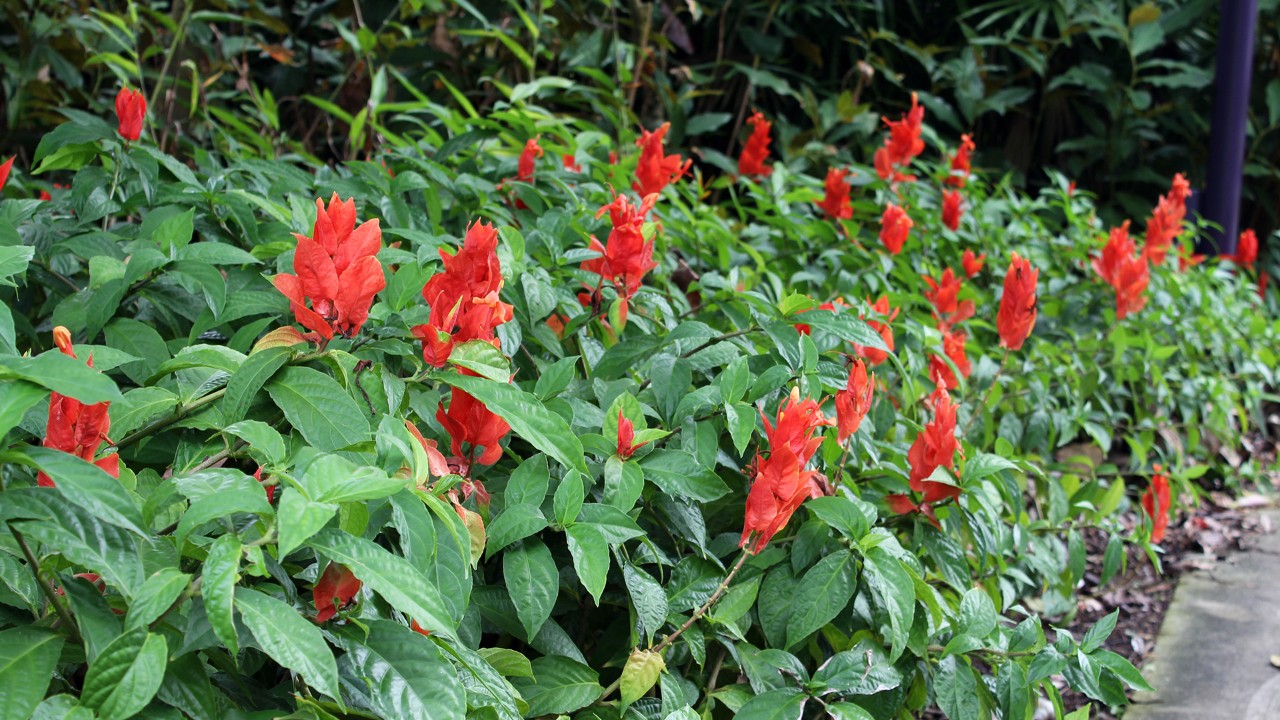
These hot and vibrant ornamentals can be found in two locations in the Outdoor Gardens: a stretch of the Golden Gardens towards Children’s Garden and Sun Pavilion, and a border planting currently in bloom along World of Plants’ Fruits & Flowers!
Written by: Hazri Boey, Senior Horticulturist (Gardens Operations)
Hazri not only surrounds himself with plants at work; he has an abundant collection at home too! Having nurtured a keen interest in nature since young, he might have gone on to become a zookeeper caring for owls or sloths had it not been for his plant identification talent!
/1920x1080px-waqanki-01.jpg)
